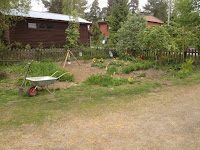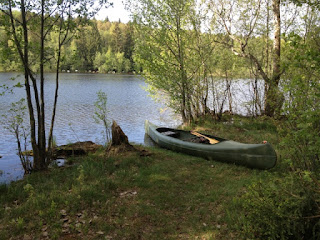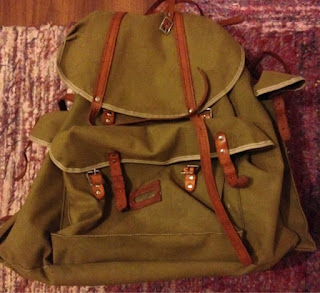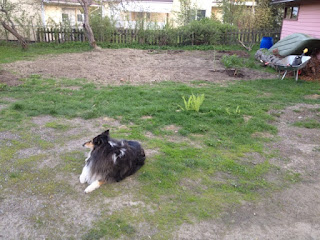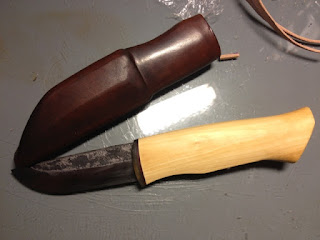Now, you have seen how much different the Finnish axes are from others. Well… it does not end yet. When comes to replacing helve, the Finnish axe has its own way.
The method of hanging Finnish axes is not much different from other types of axes. Make the helve fit to axe and drive the wedge in. And the most commonly used wedge is also the thin wooden wedge, same as of Swedish or American type. You can see this on nowadays’ hardware store replacement helves and old documentary movies of Finnish folk “
ISIEN TYÖ”.
So I was happily fitting all my Finnish axes with this method, but then I have noticed fom Kellokoski axe that this is not good enough.
The problem is caused by the top opening of eye that it widens in all directions. So if I drive single thin wedge in, on the blade lengthwise of the hole leaves a large gap. Of cause, I can fix this problem by cross wedging with 2 wedges, which what I have done, but Finnish axe have different method to solve this issue.
Do you know what this is? Or how to use it?
I am calling this “The Finnish Wedge”. This wedge is called "Käärmekiila", translated as "Snake wedge"
When I saw this wedge for the first time was on one of the movies from ISIEN TYÖ (Note: I think it was, but now I cannot find which movie clip...). in the book called "Kirves" In that movie clip book , it was explained that, what guys are making are call “Kiila”, means “wedge”. But since it has so different in shape, I did not understand that was for axe.
Then later on, when I was looking at the Finnish army educational document of axe again, there it is, the same wedge described and also how it sits in to tukkapuu (the helve top part sticks out from top of axe).
It is most unusual but makes sense. So here I am, recreating this
"Finnish Wedge" "Käärmekiila" to hang Kellokoski N:o12.3.
First, make helve fit to the axe. draw the top eye hole out-line on top end of the helve then start whitering.
also, it seems so that to make shoulder on the on the neck, where the axe sleeve ends, seems to be common. I thought it is a good way to make the sleeve - neck line flash, so made it as so.
notice how rectangle like hexagon it is? Quite long and heavily tapered? this is quite good copy of the inside of the eye.
now, this is the part I am not suite sure, how it should be done. I understand that need to make the diagonal cross cuts on top end of helve. the question is do I need to cut it with saw, or just splitting it...?
I decided to go with just splits.
Then seat the axe and time to drive the wedge in.
Little messy?? I think the reason for that is; there is a 1 extra slit, which was there as I have bought the helve. It is for the normal wedge and that has caused little problem there.
But still, I can tell you for sure that this wedge makes excellent hold. Also because of the shape of wedge, it really should not be needing to glue the wedge to make sure that the wedge does not come out.
This was my first try to recreate this method and *
still have some questions need an answer*. But I definitely have confidence on this and can see many benefits. well, I still need to swing this newly fitted axe to confirm what I am feeling of this wedge.
adding this as for revised version:
*
still have some questions need an answer*
The one question I had at the time of writing this was "how thick the wedge suppose to be". the answer was on the book "Kirves". it is approximately 1/3 of eye size. so One I made was little too thick, but was close enough.
Still have question on how long it should be... Well, the answer might be on that book, I just need to spend more time reading it with dictionary on my hand.

